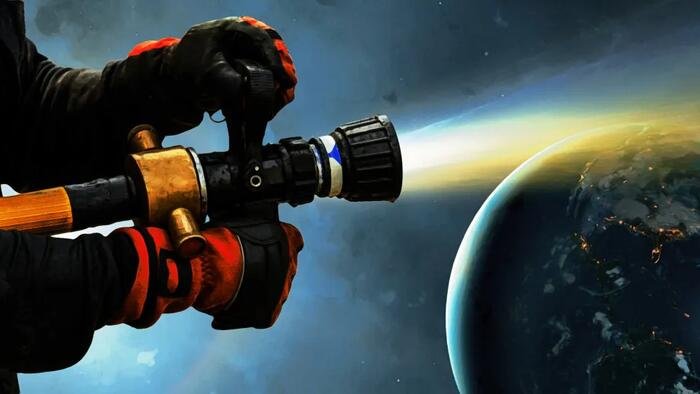Written by Frank Landymore via Futurism.com,
An analysis of the interstellar visitor in our solar system, 3I/ATLAS, has revealed that it is releasing significant amounts of water — a phenomenon that has left astronomers puzzled.
The object, believed to be a comet, exhibited strong ultraviolet emissions indicative of hydroxyl gas (OH), a product of water, when observed with NASA’s Neil Gehrels Swift space telescope before disappearing behind the Sun. These emissions were only detectable from space as the ultraviolet light would be absorbed in the atmosphere.
Their research, outlined in a recent study published in The Astrophysical Journal Letters, suggests that the presence of OH signals that the comet is expelling water vapor at a rapid rate of approximately 88 pounds per second — comparable to a fire hose operating at full capacity, as described in a press release on the discovery.
What makes this discovery even more extraordinary is that it occurred quite far from the Sun, at a heliocentric distance of about three astronomical units (AU), or three times the distance between Earth and the Sun. Typically, comets release water vapor when they are much closer to the Sun, where the water ice in their core, known as a nucleus, begins to sublimate. The continuous outflow of water vapor from 3I/ATLAS suggests that the comet must contain substantial water reserves.
“When we detect water — or even its faint ultraviolet echo, OH, — from an interstellar comet, we’re reading a note from another planetary system,” noted coauthor Dennis Bodewits, a physics professor at Auburn University. “It tells us that the ingredients for life’s chemistry are not unique to our own.”
This event is just one example of the intriguing nature of interstellar objects like 3I/ATLAS. It provides a glimpse of a distant location, possibly millions of light years away, passing by our vicinity. The unique characteristics of these objects compared to local comets hint at the distinctiveness of these alien realms and the need for further exploration of how star systems form and evolve.
Typically, a comet’s coma, a large halo of gas and dust that gives comets their luminous appearance, begins to form as the object approaches the Sun and heats up. The heat causes the material in the nucleus, which is much smaller than the visible tail, to sublimate or vaporize.
3I/ATLAS’s coma has presented numerous surprises. Its composition is unusual compared to local comets, displaying an exceptionally high ratio of carbon dioxide to water.
The cause of the water vapor outflow remains unclear. Astronomers suggest that sunlight may be heating up the ice grains released from the nucleus, leading to their vaporization in the surrounding coma.
Scientists believe that 3I/ATLAS originated from the center of the Milky Way, where it was likely ejected from its original star system due to a gravitational disturbance, such as a close encounter with another star, before traversing interstellar space and entering our solar system. Based on these assumptions, astronomers estimate that the comet could be billions of years old, potentially three billion years older than the Sun itself. It not only offers a glimpse of a different part of the galaxy but also a different era in the universe.
Currently, 3I/ATLAS is positioned behind the Sun, making it inaccessible for observation from Earth. However, spacecraft near Mars have captured images of the comet, and it will reappear in late November for further study.
“Every interstellar comet discovered thus far has been a surprise,” remarked lead author Zexi Xing, a postdoctoral researcher at Auburn University, referencing the two previously identified interstellar objects. “‘Oumuamua was dry, Borisov was rich in carbon monoxide, and now ATLAS is releasing water at a distance we did not anticipate.”
“Each discovery,” Xing added, “is reshaping our understanding of planetary and comet formation around stars.”
Order by midnight PST:
* * * Free Shipping above $500 on EVERYTHING * * *
Steak Lover’s Bundle (get ‘For 4’ for free shipping)
Carnivore Trio: Beef, Chicken & Pork
Loading recommendations…


